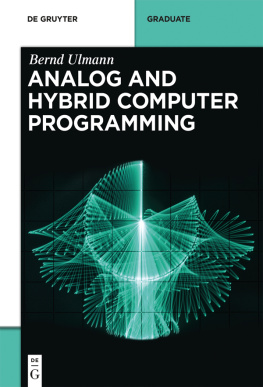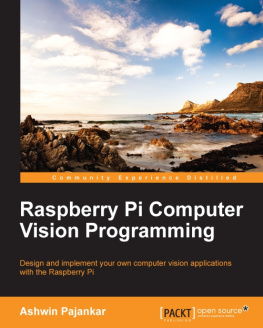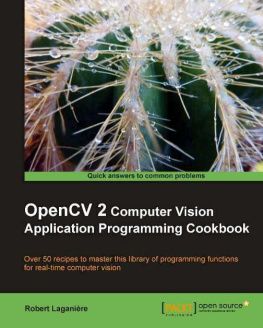Bernd Ulmann - Analog and Hybrid Computer Programming
Here you can read online Bernd Ulmann - Analog and Hybrid Computer Programming full text of the book (entire story) in english for free. Download pdf and epub, get meaning, cover and reviews about this ebook. year: 2020, publisher: Walter de Gruyter, genre: Computer. Description of the work, (preface) as well as reviews are available. Best literature library LitArk.com created for fans of good reading and offers a wide selection of genres:
Romance novel
Science fiction
Adventure
Detective
Science
History
Home and family
Prose
Art
Politics
Computer
Non-fiction
Religion
Business
Children
Humor
Choose a favorite category and find really read worthwhile books. Enjoy immersion in the world of imagination, feel the emotions of the characters or learn something new for yourself, make an fascinating discovery.
- Book:Analog and Hybrid Computer Programming
- Author:
- Publisher:Walter de Gruyter
- Genre:
- Year:2020
- Rating:4 / 5
- Favourites:Add to favourites
- Your mark:
- 80
- 1
- 2
- 3
- 4
- 5
Analog and Hybrid Computer Programming: summary, description and annotation
We offer to read an annotation, description, summary or preface (depends on what the author of the book "Analog and Hybrid Computer Programming" wrote himself). If you haven't found the necessary information about the book — write in the comments, we will try to find it.
Analog and Hybrid Computer Programming — read online for free the complete book (whole text) full work
Below is the text of the book, divided by pages. System saving the place of the last page read, allows you to conveniently read the book "Analog and Hybrid Computer Programming" online for free, without having to search again every time where you left off. Put a bookmark, and you can go to the page where you finished reading at any time.
Font size:
Interval:
Bookmark:

Bernd Ulmann
Analog and Hybrid Computer Programming
Also of interest

Photonic Reservoir Computing
Optical Recurrent Neural Networks
Ed. by Daniel Brunner, Miguel C. Soriano, Guy Van der Sande, 2019
ISBN 978-3-11-058200-0, e-ISBN (PDF) 978-3-11-058349-6,
e-ISBN (EPUB) 978-3-11-058211-6
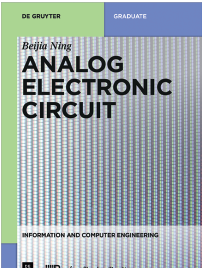
Analog Electronic Circuit
Ed. by Ning, Beijia
Together with China Science Publishing & Media Ltd., 2018
ISBN 978-3-11-059540-6, e-ISBN (PDF) 978-3-11-059386-0,
e-ISBN (EPUB) 978-3-11-059319-8
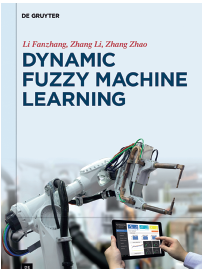
Dynamic Fuzzy Machine Learning
Fanzhang Li, Li Zhang, Zhao Zhang, 2017
ISBN 978-3-11-051870-2, e-ISBN (PDF) 978-3-11-052065-1,
e-ISBN (EPUB) 978-3-11-051875-7
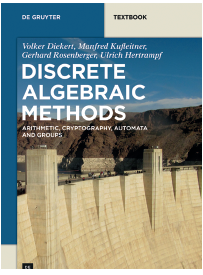
Discrete Algebraic Methods
Arithmetic, Cryptography, Automata and Groups
Volker Diekert, Manfred Kufleitner, Gerhard Rosenberger,
Ulrich Hertrampf, 2016
ISBN 978-3-11-041332-8, e-ISBN (PDF) 978-3-11-041333-5,
e-ISBN (EPUB) 978-3-11-041632-9
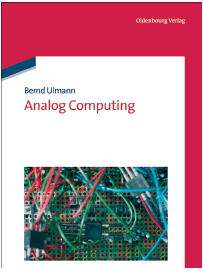
Analog Computing
Bernd Ulmann, 2013
ISBN 978-3-486-72897-2, e-ISBN (PDF) 978-3-486-75518-3

Mathematics Subject Classification 2010
Primary: 34-04, 35-04; Secondary: 92C45, 92D25, 34C28, 37D45
Author
Prof. Dr. Bernd Ulmann
Schwalbacher Str. 31
65307 Bad Schwalbach
ulmann@analogparadigm.com
ISBN 978-3-11-066207-8
e-ISBN (PDF) 978-3-11-066220-7
e-ISBN (EPUB) 978-3-11-066224-5
Library of Congress Cataloging-in-Publication Data
A CIP catalog record for this book has been applied for at the Library of Congress.
Bibliographic information published by the Deutsche Nationalbibliothek
The Deutsche Nationalbibliothek lists this publication in the Deutsche Nationalbibliografie; detailed bibliographic data are available on the Internet at http://dnb.dnb.de.
2020 Walter de Gruyter GmbH, Berlin/Boston
www.degruyter.com
For Rikka.
This book would not have been possible without the support and help of many people. First of all, I would like to thank my wife RIKKA MITSAM who never complained about the many hours I spent writing this book. In addition to that, she did a lot of proofreading and post-processed all of the oscilloscope screenshots and various pictures to make them print-ready.
I am also greatly indebted to Dr. CHRIS GILES who not only gave much constructive criticism but also pointed out lots of additional interesting literature and programming examples. He also extended OCCAM s razor into OCCAM s chainsaw during the process of proofreading and enhancing this book. :-)
In addition, I wish to express sincere thanks to Dr. DUNCAN CADD , MAIKEL HAJIABADI , FELIX LETKEMANN , BERND JOHANN , NICOLE MATJE , OLIVER BACH , JENS FLEMMER , Dr. CHRISTIAN KAMINSKI , Dr. ROBERT SCHORR and IAN S. KING who have proofread this book and offered helpful advice. Discussions with JENS BREITENBACH greatly enhanced appendix C for which I am very grateful. He also spotted numerous errors and inconsistencies which were rectified accordingly.
I am also indebted to Mr. MIRKO HOLZER who programmed the digital portion of the hybrid computer setup described in .
Last but not least, I would like to thank TIBOR FLORESTAN PLUTO for his permission to use some of his photographs in this book ( and the title picture).
All of the worked examples in the book have been implemented on an Analog Paradigm Model-1 analog computer, for two reasons. First, the author is one of the main developers of this system and second, the machine seems to be the only analog computer currently available on a commercial basis. All of the examples can be (and have been to a large degree) programmed on other machines, like the classic Telefunken or EAI table-top computers, if the relatively minor differencesin operation and patching are taken into account. Using the Model-1 was not intended for promotional purposes. Many of the examples were previously published online in abbreviated form as application notes.
A wealth of information about typical systems, such as EAI or Telefunken table-top computers, including user manuals, schematics etc., can be found in the library section of http://analogmuseum.org .
A book about programming analog and hybrid computers may seem like an anachronism in the 21st century why should one be written and, even more important, why should you read it? As much as analog computers seem to be forgotten, they not only have an interesting and illustrious past but also an exciting and promising future in many application areas such as high performance computing ( HPC for short), the field of dynamic systems simulation, education and research, artificial intelligence (biological brains operate, in fact, much like analog computers), and, last but not least, as coprocessors for traditional stored-program digital computers, forming so-called hybrid computers .
From todays perspective, analog computers are mainly thought of as being museum pieces and their programming paradigm seems archaic at first glance. This impression is as wrong as can be and is mostly caused by the classic patch field or patch panel onto which programs are patched in form of an intricate maze of wires, resembling real spaghetti code... On reflection, this form of programming is much easier and more intuitive than the algorithmic approach used for stored-program digital computers (which will be just called digital computer s from now on to simplify things). Future implementations of analog computers, especially those intended as coprocessors, will probably feature electronic cross-bar switches instead of a patch field. Programming such machines will resemble the programming of a field programmable gate array ( FPGA ), i. e. a compiler will transforma set of problem equations into a suitable setup of the crossbar-switches, thus configuring the analog computer for the problem to be solved.
The notion of an analog computer has its roots in the Greek word ( analogon ) which lives on in terms like analogy and analogue. This quite aptly characterizes an analog computer and separates it from todays digital computers. The latter have a fixed internal structure and are controlled by a program stored in some kind of random access memory.
In contrast, an analog computer has no program memory at all and is programmed by actually changing its structure until it forms an analogue, a model , of a given problem. This approach is in stark contrast to what is taught in programming classes today (apart from those dealing with FPGAs). Problems are not solved in a step-wise (algorithmic) way but instead by connecting the various computing elements of an analog computer in a suitable manner forming a circuit that serves as a model of the problem under investigation. Figures 1.1 and 1.2 illustrate these two fundamentally different approaches to computing. While a classic digital computer works more or less in a sequential fashion, the computing elements of an analog computer work in perfect parallelism with none of the synchronization issues that are often encountered in digital computing.
Font size:
Interval:
Bookmark:
Similar books «Analog and Hybrid Computer Programming»
Look at similar books to Analog and Hybrid Computer Programming. We have selected literature similar in name and meaning in the hope of providing readers with more options to find new, interesting, not yet read works.
Discussion, reviews of the book Analog and Hybrid Computer Programming and just readers' own opinions. Leave your comments, write what you think about the work, its meaning or the main characters. Specify what exactly you liked and what you didn't like, and why you think so.

